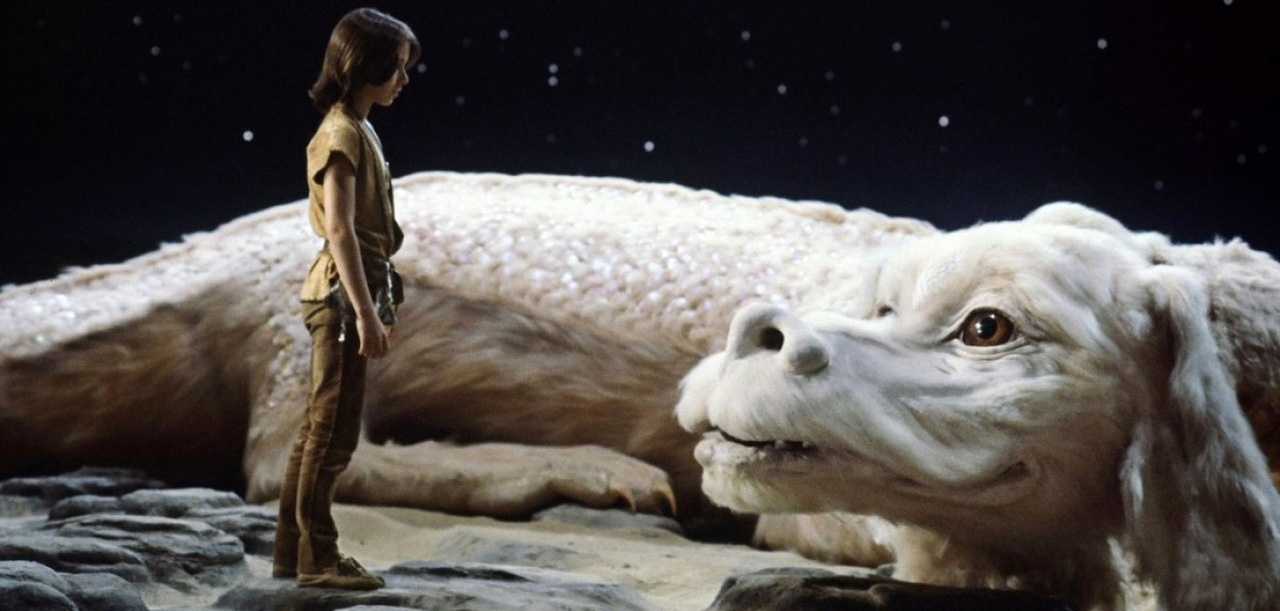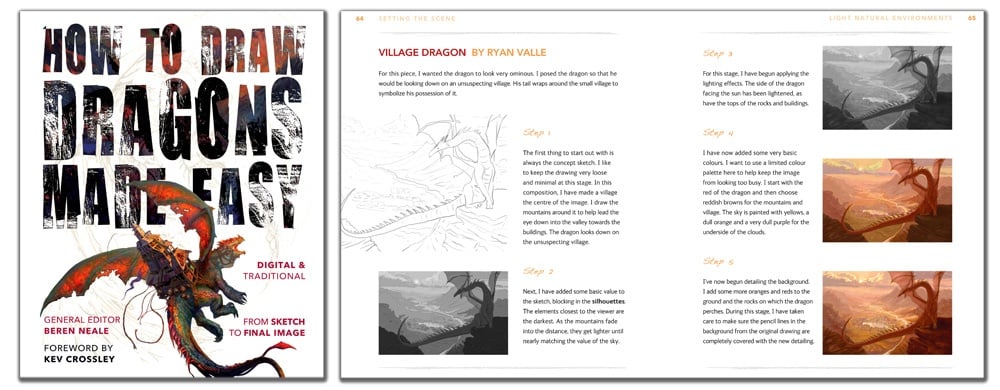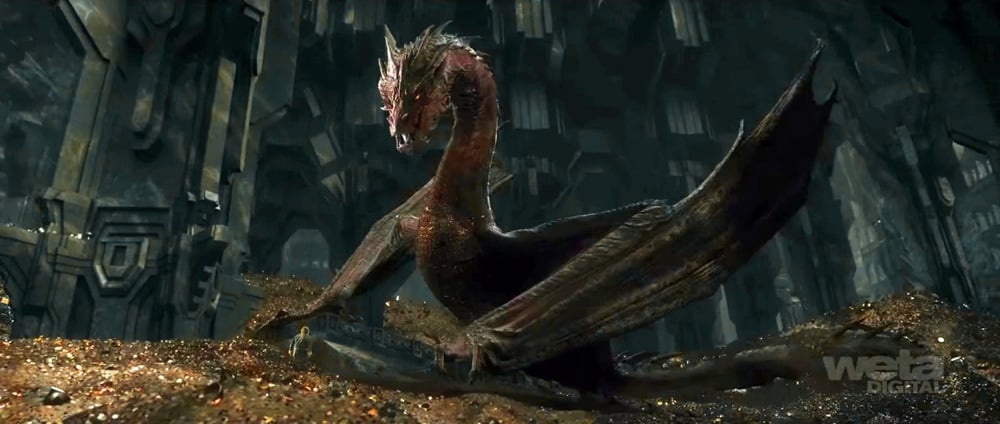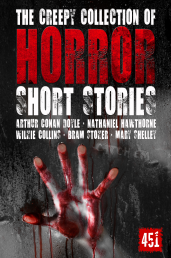Dragons are dramatic creatures – the very height of awesome power and destructive potential. Dr Faustus notoriously rides a dragon-drawn chariot, and these creatures have long been associated with heroism, grandeur and ancient mystery.
The ‘dragon’ has been imagined in various forms, and for Carl Jung, they were an ‘archetype’, that is, an inherited idea or image that formed part of society’s collective unconscious. Jung explains the cold-blooded, reptilian nature commonly attributed to dragons is a way for us to collectively identify or represent symbolically the inhuman part of our own psychology. Our last blog on dragons covered a number of dragons in literature that embody these necessary components that oppose and emphasise the hero-type. But how have dragons and dragon-like figures been conveyed in visual form? The artwork and design of a dragon is highly important in confirming as well as enhancing our understanding of what a ‘dragon’ is, and below we’ve come up with a list of 8 of the most memorable on-screen dragons.
Smaug in The Hobbit
Predominantly in the second film – The Desolation of Smaug (2013) – of the Peter Jackson Hobbit trilogy, here is the archetypal, definitive dragon. A dragon of tremendous size, fearsomely guarding mountains of treasure in its vast lair; if it looked anything less than spectacular it would have felt a poor representation of this impressively powerful character. Fortunately, Jackson’s fire-breathing Smaug is a digital masterpiece, brought to life by Weta Digital and consisting of a structure of over 300 bones and 100 muscles programmed to biologically respond as real-life lizard creatures would. The chillingly eloquent voice emitting from Smaug’s crocodile-mouth belongs to Benedict Cumberbatch, who also performed the role in motion capture suits to help the dragon’s movements feel realistic. With Smaug’s first appearance being the tantalizing sight of the gigantic eye flickering open at the end of the first film, the full unveiling of this dragon was well-anticipated and displayed Smaug in all his roaring magnificence. Take a look at the iconic illustration of Smaug by John Howe (a chief conceptual designer for the Lord of the Rings trilogy) here.
King Ghidorah
Here we have a fairly straightforward monster figure, aside from the fact it has three heads. Its main appearance was as the archenemy of Godzilla in the 1964 Japanese film Ghidorah, the Three-Headed Monster, which marked the first film where Godzilla became a hero. Ghidorah was played by actor Shoichi Hirose in a costume, while its heads, tails and wings were controlled offstage by puppeteers. The film explains Ghidorah’s extra-terrestrial origins, describing how it destroyed the civilization of Venus before coming to do the same to Earth. An incredibly destructive being that can emit laser beams like lightening from its mouths, Ghidorah was initially inspired by the water monster Hydra from Greek mythology.
Maleficent in Disney’s Sleeping Beauty
Disney’s 1959 animated take on this fairy tale used a combination of material from Perrault and the Brothers Grimm tale ‘Briar Rose’ – though it significantly altered the content and added the iconic battle with the dragon. The original recorded story by Perrault only mentions the evil fairy at the beginning, and its horror elements (in the form of an ogre stepmother) take place after the prince and princess are united. In Disney’s version, however, the figure of Maleficent (‘the Mistress of All Evil’) transforms at the end into an at-once bat-like and reptilian dragon form, animated by Eric Cleworth. The dark bitterness of this manifestation carries the same menacing elegance as the human Maleficent, though the evil feels augmented by the size and ruthless monstrosity of the black dragon. The audio for her snapping jaws was created using castanets, and the sound behind the sinister green fire she breathes was actually taken from US army flame-throwing training videos. Cleworth stated that he modeled the ‘ponderous, reptilian grace’ of her movements on a rattlesnake, and this certainly amplifies the impression of her venomous, insidiously destructive power. Already a fertile field for psychoanalysis, the addition of the dragon into this fairy tale is as symbolically loaded as it is visually arresting, especially with her fairly bloody stabbing at the hands of Prince Philip. The overall art direction for the film was by Eyvind Earle, who was responsible for the backgrounds and the dark gothic atmosphere that permeates the whole setting.
Draco in Dragonheart
In this 1996 Rob Cohen film, the powerful, lion-like dragon Draco was voiced by Sean Connery. Draco had a distinctive personality that appealed to the film’s audience – he was witty, intelligent, honourable and playfully took part in staged dragon-slayings. His human nature (in the story, half of the dragon’s heart is exchanged and linked with a human heart) meant this dragon had to be able to really ‘act’ a part, and express a convincing emotional range. As such, analysis of over 200 photos of Sean Connery’s facial expressions were used in order to encourage the believability of the dragon’s reactions and movements. The digital model was built using Alias|Wavefront software on Silicon Graphics workstations, and required more than 40,000 animation points and 23 minutes of screentime. Industrial Light & Magic worked on the animation (they had previously worked on Star Wars, Jurassic Park, Casper and Jumanji), and it proved to be an advanced work of computer animation at the time, with its visual effects being nominated for an Academy Award.
Falkor the Luck Dragon
Falkor is the iconic Luck Dragon from the NeverEnding Story. The 1984 film was directed by Wolfgang Petersen and was based on the 1979 German novel by Michael Ende. Falkor exists in the land of Fantasia, and is a source of immense luck and optimism, known for his words of encouragement: ‘never give up and good luck will always find you’. His positive powers connect him closer to the idea of a Chinese dragon; there are scales on his back, he is able to fly without having wings, and he exhales blue fire. Playing the role of a wise friend that gives advice when hope is lost, the Luck Dragon is gentle in nature, an impression amplified by the depiction of him in the film as having a dog-like face and furry tail and paws. Voiced by Alan Oppenheimer, the 15 m-long animatronic puppet was built on a frame made of airplane steel, with its movements actively manipulated by a team of about 25 hidden on-screen technicians

Haku from Spirited Away
Hayao Miyazaki's Spirited Away features a different sort of dragon again, this time as the form taken by a shape-shifting river spirit. The graceful, flowing form of the white dragon with a turquoise mane is closely associated with the serpentine structure of rivers and water. Chinese dragons, which heavily influenced Japanese dragons, were regarded as a type of water deity, a positive symbol of power and good luck, and able to rule moving bodies of water. There is a long history of dragons being understood as water-creatures, or rulers of the seas and rivers, as even in Norse sagas it was common for Vikings to affix dragon heads to the bow as a protective force. In Spirited Away, Haku has lost his true identity and river-home, and sparks up a loyal friendship with the protagonist Chihiro/Sen, who is able to help him regain self-knowledge and power.
Toothless in How to Train Your Dragon
Directed by Chris Sanders and Dean DeBlois, this 3D computer animation by DreamWorks Animations features a dragon that certainly wins the prize for most-adorable-dragon. Initially regarded as an immense threat, Toothless is called ‘Night Fury’ by the inhabitants of the Viking village who greatly respect those dragon-slayers that help protect their livestock from dragon raids. When Hiccup befriends the dragon, we can see that it contains all the typical dragon attributes that make it a fearsomely effective opponent, but we also see its playfulness and loyalty too. The mute Toothless is able to convey much emotion and personality through its endearingly large eyes and behaviour, and the traditional idea of dragon-as-guardian is given a modern twist when the villagers and dragons are able to cohabit in a mutually beneficent society.
The Gringott’s Dragon in Harry Potter and the Deathly Hallows, Part Two
In a spectacular escape from the depths of the Gringotts bank, Harry, Ron and Hermione release one of the guardian dragons and ride it out to safety. In the vaults, the dragon is an imprisoned animal, highly dangerous yet tortured and kept to its post to be used as an anti-theft measurement for the most valuable items. When released, the immense dragon in the film is able to finally exercise its magnificent, raw power, causing destruction as it climbs out of the ancient building to its freedom. See here for an interview with film’s visual effects supervisor on how this particular dragon was brought to life.
 Think you can create an effective image of a dragon? If you're feeling inspired by this list of creatively adventurous examples, take a look at our book How to Draw Dragons Made Easy [ISBN: 9781783616527] for expert guidance on making your visions a reality. It can be found via our website, or on Amazon.
Think you can create an effective image of a dragon? If you're feeling inspired by this list of creatively adventurous examples, take a look at our book How to Draw Dragons Made Easy [ISBN: 9781783616527] for expert guidance on making your visions a reality. It can be found via our website, or on Amazon.
Links
- If you haven't had enough dragon visuals, we also have a book on Dragon Art.
- Buzzfeed has taken the pains to provide us with the 17 Best Falkor Impersonations by Dogs on Instagram and it doesn’t disappoint.
- Another dragon that just missed out on a mention here was Puff the Magic Dragon – you can listen to the famous song about him here.





